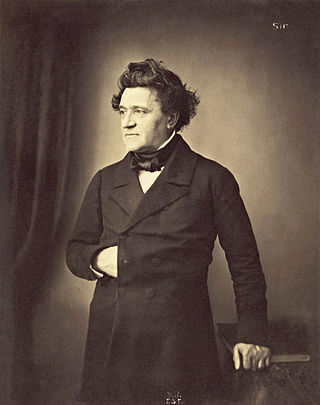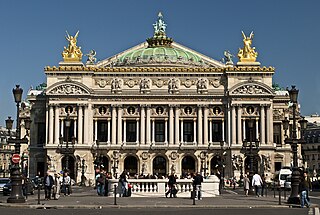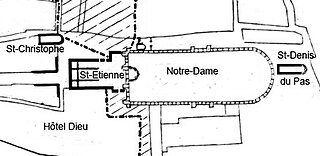Paul Louis Boeswillwald (Paris, October 22, 1844 - Paris, July 17, 1931 [1] ) was a French architect and art historian.
Contents

Paul Louis Boeswillwald (Paris, October 22, 1844 - Paris, July 17, 1931 [1] ) was a French architect and art historian.

Son of the architect Émile Boeswillwald and father of the painter Émile Artus Boeswillwald, he was a pupil of his father and Charles Laisné and collaborated with Eugène Viollet-le-Duc on the restoration of the ramparts of the historic Fortified City of Carcassonne since 1879. [2]
Like his father, he was an inspector of historical monuments. He succeeded his father in the restoration of the Saint-Étienne cathedral in Toul. He was also a professor and had as students Max Sainsaulieu and Paul Vorin. [3]
A diocesan architect of Bourges, he joined the commission for historical monuments on March 26, 1885, was appointed inspector general on December 21, 1895, to replace his father, and retired on February 11, 1929.


His son portrayed him in 1895. This work exhibited at the Salon of French Artists in 1895 was donated, in 1982, to the museum of Nogent-sur-Seine.

Eugène Emmanuel Viollet-le-Duc was a French architect and author, famous for his restoration of the most prominent medieval landmarks in France. His major restoration projects included Notre-Dame de Paris, the Basilica of Saint Denis, Mont Saint-Michel, Sainte-Chapelle, the medieval walls of the city of Carcassonne, and Roquetaillade castle in the Bordeaux region.

Carcassonne is a French fortified city in the department of Aude, region of Occitania. It is the prefecture of the department.

Paul Abadie was a French architect and building restorer. He is considered a central representative of French historicism. He was the son of architect Paul Abadie Sr.

Cambrai Cathedral is a Catholic church located in Cambrai, Nord, France, and is the seat of the Archbishop of Cambrai. The cathedral was registered as a monument historique on 9 August 1906.

The Basilica of Saints Nazarius and Celsus is a Roman Catholic minor basilica located in the citadel of Carcassonne, France. It is a national monument, and is in the Gothic-Romanesque architectural tradition.

The Diocese of Nancy and Toul is a Latin Church ecclesiastical territory or diocese of the Catholic Church in France. After a considerable political struggle between Louis XV, Louis XVI, and the Dukes of Lorraine, the diocese was erected by Pope Pius VI on 17 December 1777. The Diocese of Nancy is a suffragan diocese in the ecclesiastical province of the metropolitan Archdiocese of Besançon.

French Gothic architecture is an architectural style which emerged in France in 1140, and was dominant until the mid-16th century. The most notable examples are the great Gothic cathedrals of France, including Notre-Dame Cathedral, Reims Cathedral, Chartres Cathedral, and Amiens Cathedral. Its main characteristics are verticality, or height, and the innovative use of the rib vault and flying buttresses and other architectural innovations to distribute the weight of the stone structures to supports on the outside, allowing unprecedented height and volume. The new techniques also permitted the addition of larger windows, including enormous stained glass windows, which fill the cathedrals with light.

Second Empire style, also known as the Napoleon III style, is a highly eclectic style of architecture and decorative arts, which uses elements of many different historical styles, and also made innovative use of modern materials, such as iron frameworks and glass skylights. It flourished in the Second French Empire during the reign of Emperor Napoleon III (1852–1870) and had an important influence on architecture and decoration in the rest of Europe and North America. Major examples of the style include the Opéra Garnier (1862–1871) in Paris by Charles Garnier, the Bibliothèque nationale de France, the Church of Saint Augustine (1860–1871), and the Philadelphia City Hall (1871–1901). The architectural style was closely connected with Haussmann's renovation of Paris carried out during the Second Empire; the new buildings, such as the Opéra, were intended as the focal points of the new boulevards.

The Cité de Carcassonne is a medieval citadel located in the French city of Carcassonne, in the Aude department, Occitania region. It is situated on a hill on the right bank of the river Aude, in the south-eastern part of the city proper.

Antoine-Nicolas Louis Bailly was a French architect.

The Parish Church of Our Lady of the Basse Œuvre of Beauvais is a church at the west end of Beauvais Cathedral dating to the 10th century. It is the western end of a much longer church which had been Beauvais's cathedral, and was built in the form of a Roman basilica, a style which still characterized the Carolingian era.
Jean-Charles-Léon Danjoy was a French architect who specialized in renovating historical buildings.

Émile Boeswillwald was a French architect. He succeeded Prosper Mérimée as Inspector General of Historic Monuments and collaborated with Eugène Viollet-le-Duc.

François Blouet de Camilly, Comte de Saint-Pierre-sur-Dives, D.D.,, a French Catholic clergyman, was the 88th Bishop of Toul from 1706 to 1721 and the 117th Archbishop of Tours from 1721 to 1723.

Onésime-Aristide Croisy was a French sculptor. He is known for his dramatic bronze military statues, but perhaps best known for his marble Le Nid, showing two children asleep in an armchair.

Jean-Jules Clamageran was a French politician of the French Third Republic. He was briefly minister of finance in the ministry of Henri Brisson. He was made a life senator in the Senate of France in 1882.

Edmond Clément Marie Duthoit was a French 19th-century architect, originating from Amiens. He was the eldest son of Aimé Duthoit, the nephew of Louis Duthoit, both picard designers and sculptors, and the father of Louis Duthoit.

The Basilica and Cathedral of Saint-Étienne in Paris, on the Île de la Cité, was an early Christian church that preceded Notre-Dame de Paris. It was built in the 4th or 5th century, directly in front of the location of the modern cathedral, and just 250 meters from the royal palace. It became one of the wealthiest and most prestigious churches in France. Nothing remains above the ground of the original cathedral. It was demolished beginning in about 1163, when construction began on Notre-Dame de Paris. Vestiges of the foundations remain beneath the pavement of the square in front of Notre-Dame and beneath the west front of the cathedral. The church was built and rebuilt over the years in the Merovingian, Carolingian and Romanesque architectural styles.

The abbatial church of Notre-Dame de Mouzon is the ancient church of the monastery of Mouzon, in the Ardennes region of France.